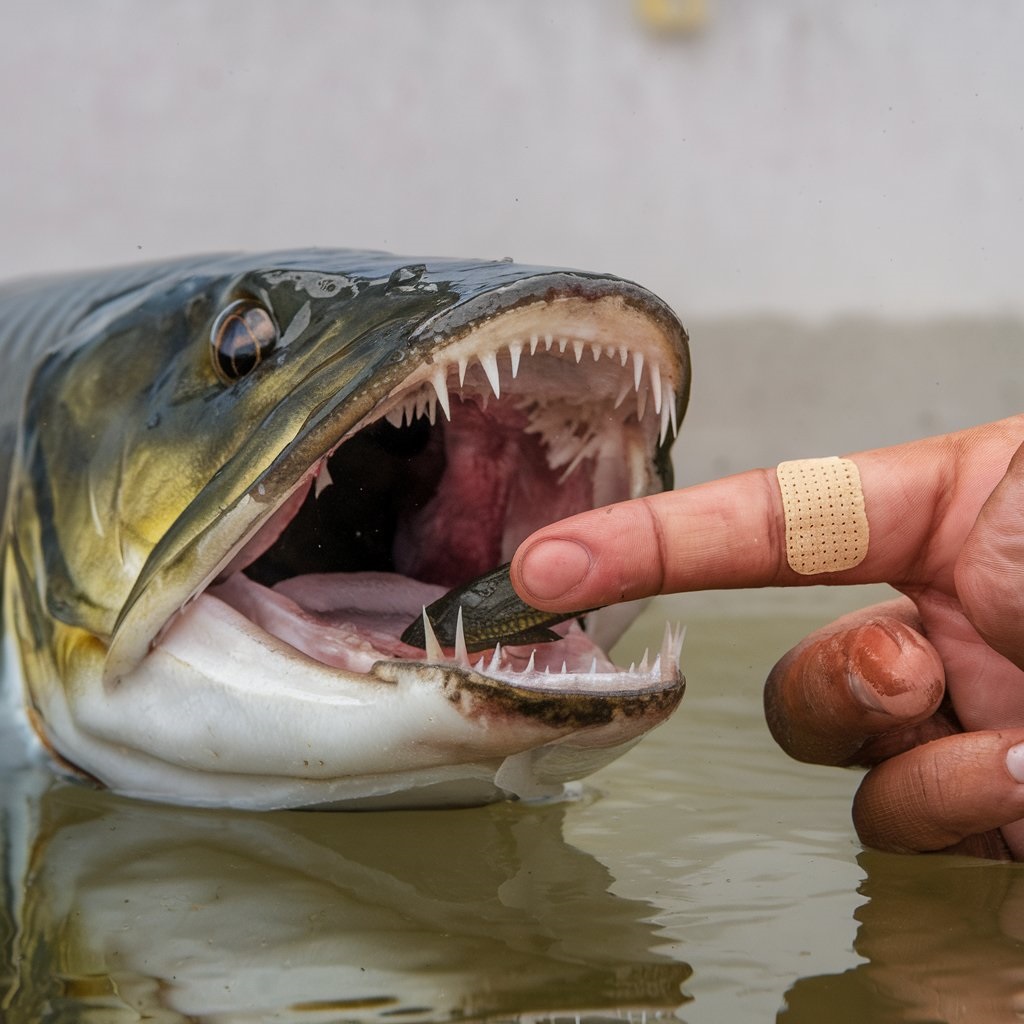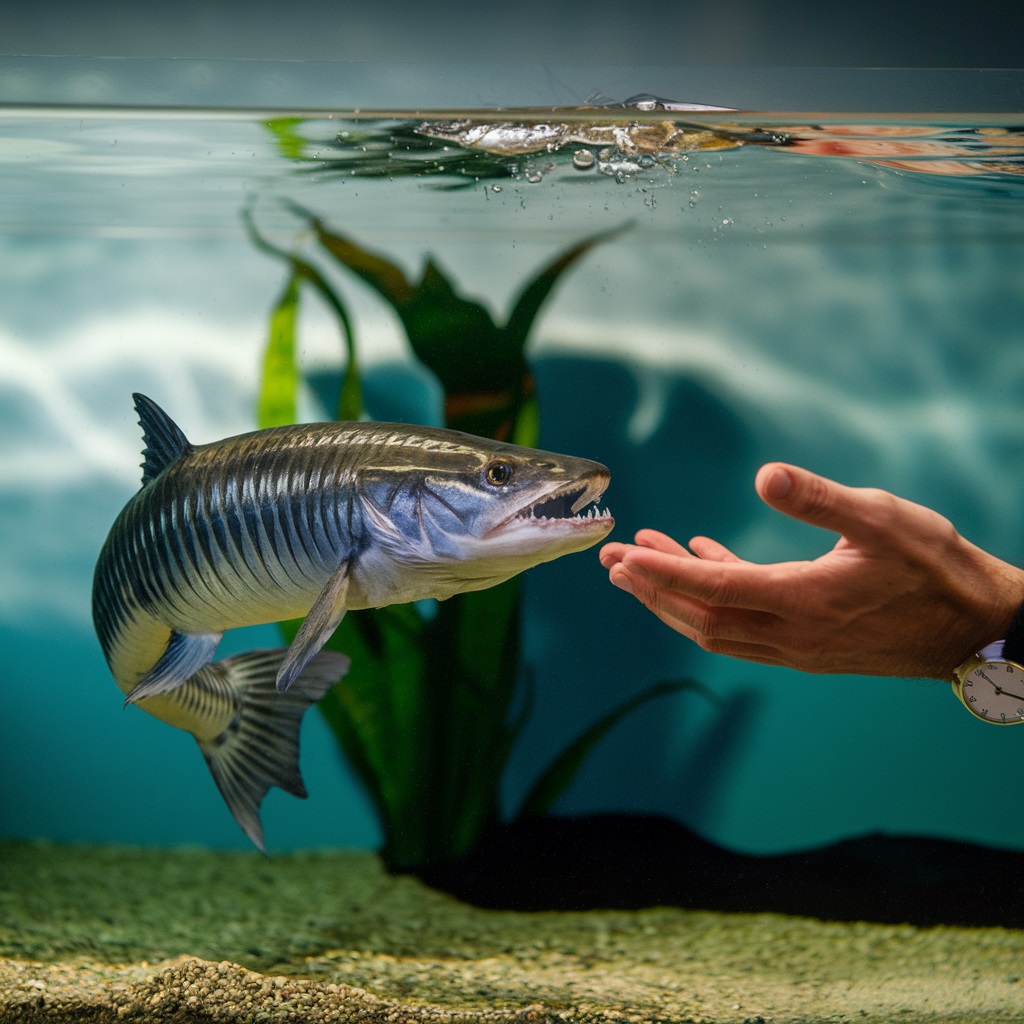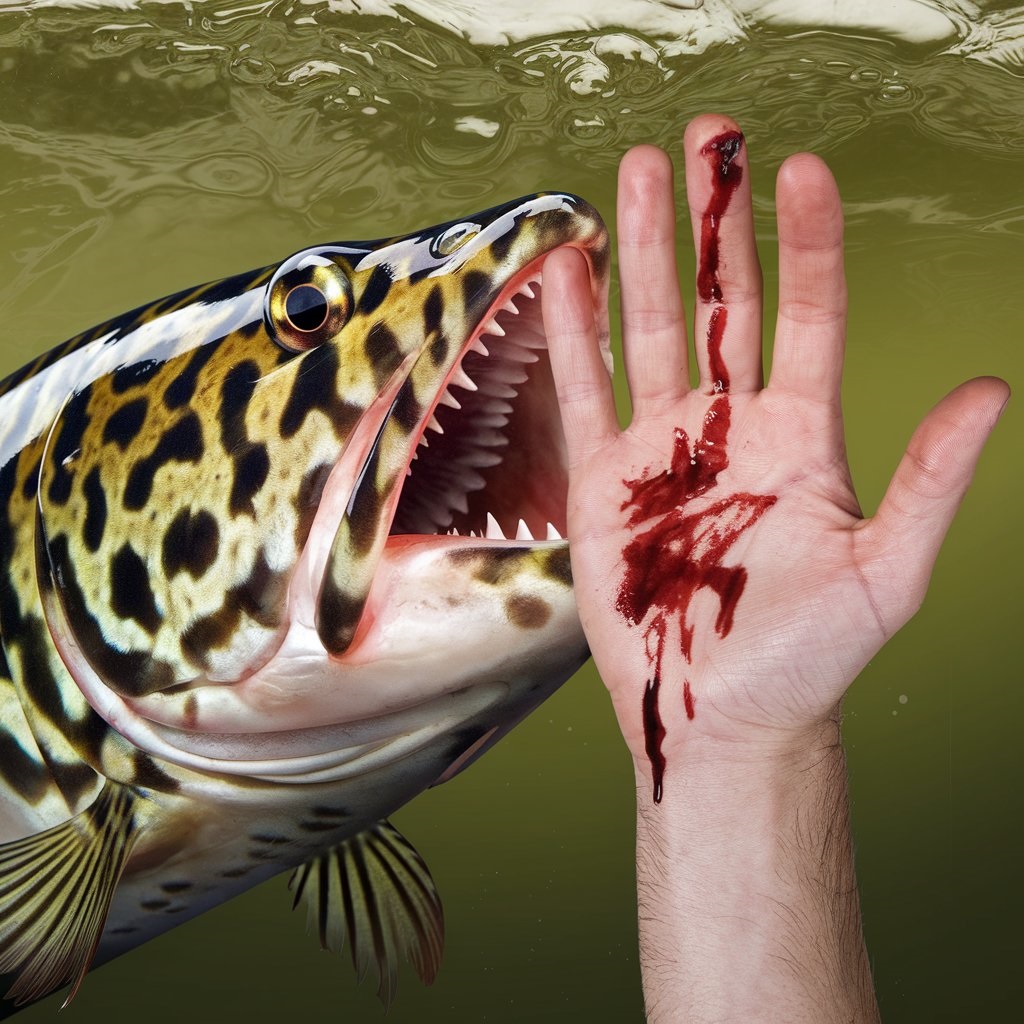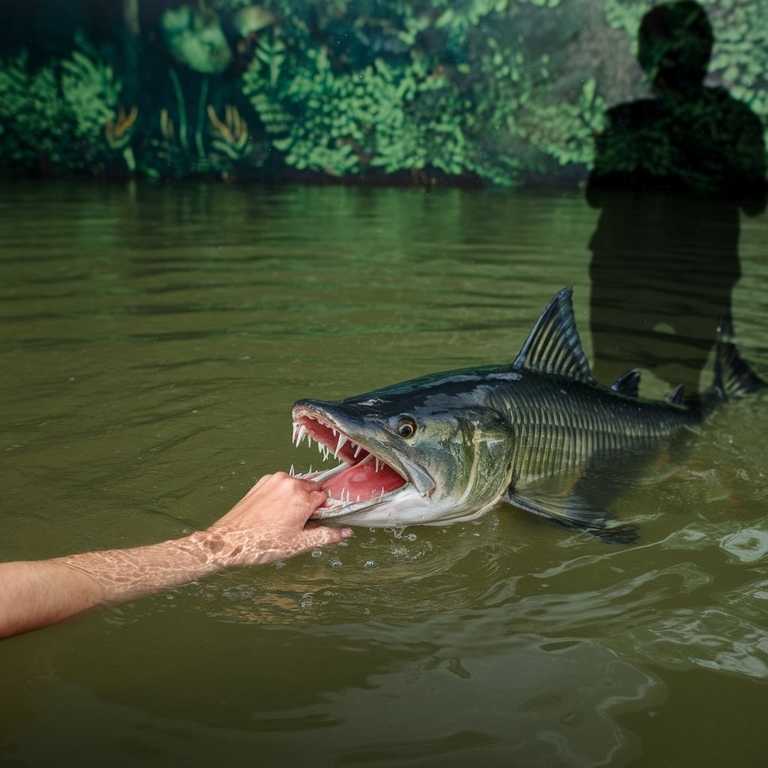Do piranhas attack humans? This question has lingered in the minds of many, fueled by sensationalized movies and exaggerated media reports. Piranhas, known for their sharp teeth and carnivorous diet, are often depicted as relentless, bloodthirsty predators. However, the truth is far less dramatic. While piranhas do have the ability to bite, they do not actively hunt humans.
In fact, piranha attacks on humans are extremely rare, typically occurring under very specific conditions. In this article, we will dive deep into the behavior of piranhas, explore the reality behind attacks, and explain how to stay safe when encountering these fascinating creatures in their natural habitat.
Here’s a table summarizing key facts and figures from the article:
| Fact/Detail | Information |
|---|---|
| Number of Piranha Species | 30 to 60 species |
| Common Species | Red-bellied piranha (Pygocentrus nattereri), Black piranha (Serrasalmus rhombeus) |
| Size of Piranhas | 15 to 25 cm (6 to 10 inches) for most species, up to 50 cm (20 inches) for larger species |
| Bite Force | Over 1,200 psi (pounds per square inch) |
| Temperature Range of Habitat | 22°C to 30°C (72°F to 86°F) |
| Countries Where Piranhas Are Found | Brazil, Peru, Colombia, Bolivia, Argentina, Venezuela, Paraguay, Ecuador, Guyana, and others |
| Famous Historical Incident | Theodore Roosevelt’s Amazon Expedition (1913) |
| Documented Piranha Attacks on Humans | Reports from 2011, 2013, 2015 (typically isolated incidents) |
| Aggressive Feeding Conditions | Blood in the water, injury to prey, food scarcity, environmental stress factors like drought |
| Swimming Precautions | Avoid swimming with open wounds, stay calm, swim in groups, follow local guidelines |
Who Are Piranhas?
Piranhas belong to the Serrasalmidae family, within the Characidae family of the order Characiformes. These fish are found primarily in the freshwater rivers and lakes of South America, particularly in regions like the Amazon Basin, Orinoco River, and parts of Brazil, Argentina, Colombia, and several other countries in South America.
Despite their frightening reputation, piranhas are an important part of their ecosystems and play a crucial role in maintaining the health of freshwater habitats.

Scientific Classification and Species Diversity
There are 30 to 60 species of piranhas, and they come in various shapes and sizes. The most well-known species is the red-bellied piranha (Pygocentrus nattereri), known for its characteristic red belly and powerful bite. Other piranhas, like the black piranha (Serrasalmus rhombeus), are much larger and can grow over 50 cm in length. Smaller species, like the yellow piranha, usually only reach around 15 to 25 centimeters.
Despite their reputation, not all piranhas are dangerous to humans. Many are omnivorous, consuming seeds, fruits, and smaller fish, rather than actively hunting larger prey.
Physical Characteristics
Piranhas are instantly recognizable due to their sharp, interlocking teeth. These teeth are designed for cutting through meat, allowing piranhas to scavenge or hunt efficiently. Their bite force is incredibly strong for their size, with some species capable of exerting over 1,200 pounds per square inch (psi) of pressure.
Piranhas have a robust body structure that helps them swim swiftly, navigating through the murky waters they call home. They are agile predators, capable of fast movements when hunting or escaping predators. Their sharp teeth are one of the main reasons why they’ve earned a fearsome reputation, but it’s important to note that not all piranhas use them on humans.
Habitat and Distribution: Where Do Piranhas Live?
Piranhas are most commonly found in the warm waters of South American rivers, lakes, and floodplains. They primarily inhabit large river systems like the Amazon, Orinoco, and Tocantins, and they are distributed across countries such as Brazil, Peru, Colombia, Paraguay, Bolivia, Argentina, and Venezuela.
Environmental Factors and Habitat Preferences
Piranhas thrive in warm and oxygen-rich water, which is why they are typically found in tropical and subtropical environments. These fish prefer water temperatures ranging from 22°C to 30°C (72°F to 86°F), which is common in the waters of the Amazon Basin. They are also highly sensitive to water quality and can be affected by pollution and drought, which can sometimes alter their behavior.
The floodplains of the Amazon River and other large rivers provide a perfect environment for piranhas to hunt and feed. The dynamic water levels in these areas create seasonal variations in food availability, which can influence the behavior of piranhas, making them either more aggressive or more cautious depending on their feeding opportunities.
Understanding Piranha Behavior
Piranhas are complex creatures, with behavior driven by various factors such as diet, territorial defense, breeding habits, and environmental influences. While they are often feared for their aggressive tendencies, the truth is far more nuanced.
Diet and Feeding Habits
Piranhas are opportunistic feeders, which means they eat what they can find. Some species are omnivores, feeding on plants, small fish, and invertebrates, while others, like the black piranha, are more carnivorous and prey on larger animals, including mammals and birds. However, even carnivorous species of piranhas don’t typically hunt humans.
- Feeding Frenzies: The classic depiction of piranhas engaging in a feeding frenzy is largely exaggerated. While piranhas do sometimes engage in frenetic feeding behaviors, these frenzies are usually triggered by an injury or the presence of food in a concentrated area. They are not bloodthirsty killers, as portrayed in movies.
- Dietary Preferences: In the wild, piranhas primarily eat fish and carrion. However, they are also known to scavenge seeds and fruits. A notable example of this is the red-bellied piranha, which is known to feed on plant material when other food sources are scarce.

Social Structure and Schooling
Piranhas are often seen in large schools, which serve as a defense mechanism against predators. Schools can consist of dozens or even hundreds of piranhas, providing safety through sheer numbers. Piranhas within a school typically engage in cooperative behaviors, protecting each other from predators.
- Schooling Behavior: The social structure of a piranha school is primarily driven by the need for safety. When food is scarce or during the breeding season, the fish may become more competitive and aggressive. However, this aggression is usually directed at rivals or intruders rather than humans.
- Social Hierarchy: Within a school, piranhas may exhibit some level of social hierarchy, with larger or more dominant fish leading the group. These schools are dynamic, and members may break off from the main group to explore new territories or feeding grounds.
Aggressive vs. Defensive Behavior
Piranhas are often portrayed as aggressive, but in reality, they are more likely to display defensive behavior. Piranhas are territorial and may aggressively defend their nests, food, or a particular area. When they feel threatened, they will defend themselves using their sharp teeth and powerful bite force. However, aggression in piranhas is usually a reaction to perceived threats rather than predatory behavior aimed at humans.
- Defensive Aggression: If you swim into piranha territory, or if they feel threatened by your movements, they might bite in self-defense. However, such interactions are more about protecting their space than attacking for food.
- Opportunistic Predation: Piranhas may bite if they feel threatened or if there is a visible source of blood in the water, such as from an injury. This is one of the reasons why piranhas can seem more aggressive than they truly are. However, attacks on humans are exceedingly rare.
Do Piranhas Attack Humans?
The fear of piranhas attacking humans is one of the most pervasive myths surrounding these fish. While attacks do happen, they are incredibly rare and typically occur in specific circumstances.
Documented Incidents of Piranha Attacks
There have been a handful of documented incidents where piranhas have attacked humans. The most well-known example occurred during Theodore Roosevelt’s Amazon expedition in 1913, where the former U.S. president and his team encountered large schools of piranhas. However, these fish did not engage in any deadly attacks on humans.
- 2011 Incident: In Brazil, a group of tourists swimming in a river near the city of Manaus were attacked by piranhas, resulting in minor injuries. The attack was believed to have been provoked by the presence of food scraps in the water, and the piranhas likely mistook the tourists for potential prey.
- 2013 and 2015 Reports: In Bolivia and Peru, there were a few reports of piranha bites on swimmers. These incidents were mostly attributed to the presence of open wounds or a disturbance in the piranhas’ environment due to overcrowding or food scarcity.
Exaggerations and Myths
Much of the fear surrounding piranhas is fueled by Hollywood and sensationalized media stories. Films like Piranha 3D have contributed to the misconception that piranhas are always on the hunt for human flesh. In reality, these fish are not inherently dangerous to humans.
- Media Influence: While piranha attacks are dramatic and make for great movie material, the actual risk to humans is very low. In fact, piranha bites on humans are usually the result of provocation or environmental stress, not predation.
- Fatalities: According to the Smithsonian Tropical Research Institute, only about 60 fatalities have been recorded in connection to piranha attacks in the past century, a small fraction compared to deaths from other animals.
Factors Influencing Piranha Attacks
While piranhas are not naturally inclined to attack humans, certain factors can increase the likelihood of an encounter.
Environmental Stress
Droughts, pollution, and overfishing can put significant stress on piranha populations. During these times, piranhas may become more aggressive in search of food or territory. Additionally, decreased food availability can lead to increased competition among schools, which might make piranhas more likely to engage in aggressive behaviors.

Human Interactions
Certain behaviors, such as swimming with open wounds, can attract piranhas, as
they are drawn to the scent of blood. In these instances, piranhas may mistake the blood for a food source and engage in biting behavior. However, these attacks are usually not life-threatening, and the wounds are often minor.
Safety Measures and Precautions
If you are planning to visit piranha-inhabited areas, there are a few simple safety measures to keep in mind:
- Avoid Swimming with Open Wounds: Piranhas are attracted to blood. If you have an open wound, it’s best to stay out of the water.
- Stay Calm in the Water: Piranhas are more likely to be provoked by sudden movements. If you stay calm and move steadily, you are less likely to provoke them.
- Follow Local Guidelines: Many places where piranhas are common have specific safety guidelines for tourists. Always follow these instructions to minimize risk.
FAQs
1. Will piranhas attack a living human?
Piranhas occasionally attack humans, but fatalities are extremely rare, usually occurring during times of low water levels. There’s no official record of a piranha attack resulting in death.
2. Is it safe to swim around piranhas?
Swimming with piranhas is generally safe for locals and tourists, as piranhas are no more dangerous than other fish unless food is scarce. Most attacks are not deliberate but stem from curiosity.
3. Have piranhas killed people?
While rare, piranhas have been involved in human fatalities, such as the case in Brazil in 2015 when a six-year-old girl was found dead after a capsized canoe.
4. What happens if a piranha bites you?
Piranha bites are typically circular and can damage skin and deeper tissues, usually on the legs. While most bites heal with minimal first aid, severe injuries are possible.
5. Are piranhas attracted to blood?
Piranhas are attracted to blood, but they mostly scavenge rather than actively hunt. Some species only nibble on the fins of other fish, leaving them unharmed.
6. Can piranhas eat through bone?
Piranhas possess sharp, interlocking teeth capable of cutting through bone, though they typically lose and replace teeth throughout their lives.
7. What are piranhas scared of?
Piranhas are generally wary of human hands and are not particularly aggressive unless provoked, often showing no interest in humans.
8. Is the original piranha still alive?
The prehistoric piranha, Pygocentrus nattereri, believed extinct 2 million years ago, has been revived in popular culture, though it no longer exists in the wild.
9. What eats piranhas?
Piranhas’ natural predators include crocodiles, river dolphins, and herons, while humans also hunt them for meat and the pet trade.
10. Who would win a shark or a piranha?
A great white shark would easily defeat a piranha due to its greater size, speed, and aggressive nature, despite the piranha’s powerful bite.
11. How fast can a piranha eat you?
Under extreme conditions, a large group of piranhas could theoretically skeletonize a human in about 5 minutes, but such situations are rare and unlikely in nature.
12. Has a piranha ever attacked a human?
Piranhas sometimes attack humans, though these incidents are generally minor, with no major fatalities or flesh-ripping swarms as depicted in movies.
13. What is the biggest piranha in the world?
The extinct Megapiranha, a giant species from the Late Miocene, grew up to 71 cm in length and weighed around 10 kg.
14. How long do piranhas live?
Piranhas can live up to 10 years, typically growing to about 12 inches in length and weighing up to 4 pounds.
15. Is a piranha bite painful?
Piranha bites can be painful and cause significant damage, but fatalities are rare. The bites typically result in minor injuries that require basic first aid.
16. How to defend against piranhas?
To protect yourself from piranhas, wear thick gloves and sturdy shoes to guard your hands and feet, as these are their most vulnerable targets.
17. Are piranhas aggressive?
Piranhas are aggressive predators, often hunting in groups to tackle larger prey, but they primarily feed on insects, smaller fish, and occasional plants.
18. What fish is more aggressive than piranha?
Species like sharks, particularly great whites, and barracudas are more aggressive than piranhas and pose a greater threat to humans.
19. Can piranha bite through steel?
Piranhas’ sharp teeth are capable of slicing through steel and other tough materials, making them formidable predators.
20. How many humans have been killed by piranhas?
While piranha attacks are rare, four people were killed in separate attacks in Paraguay in 2022, though piranhas are more often scavengers.
21. Are piranhas friendly to humans?
Piranhas are not inherently friendly to humans, though attacks are rare. They tend to be more of a threat when scavenging on dead bodies or provoked.
22. How far away can a piranha smell blood?
Piranhas can detect blood from up to two miles away, and they can quickly form a feeding frenzy in response to the scent.
23. Do piranhas eat dead bodies?
Piranhas often feed on dead bodies, especially those of drowning victims, as they are opportunistic scavengers.
24. Can piranhas survive in saltwater?
Piranhas are freshwater fish and are not well-adapted to saltwater, thriving in the rivers and streams of South America.
25. Can piranhas lay eggs?
Female piranhas lay up to 5,000 eggs, which are guarded by both parents until they hatch in about four days.
26. What triggers piranha attacks?
Piranha attacks are often triggered by splashing, noise, and the presence of blood, particularly if the person is a child or menstruating.

Conclusion: The Reality Behind Piranha Attacks
In conclusion, while piranhas have earned a fearsome reputation, they are not the relentless, bloodthirsty predators that popular culture suggests. These fish are primarily opportunistic feeders and tend to avoid humans whenever possible. Attacks on humans are extremely rare and typically occur only when provoked or under specific environmental conditions.
By understanding piranha behavior and taking simple precautions, you can safely enjoy your encounters with these fascinating creatures. Remember: piranhas are part of a delicate ecosystem and deserve respect and understanding, not myth and exaggeration.
So next time you plan a trip to the Amazon Basin or any other piranha-infested region, arm yourself with knowledge, stay cautious, and you’ll be just fine.
Read more knowledgeable blogs on Flowy Magazine

James Clair is a passionate writer and researcher with a deep fascination for animal behavior and its intricate connection to human life. With a background in [relevant field of study, e.g., zoology, psychology, ethology], James has spent years studying the natural world, focusing on how animals’ actions and instincts impact human emotions, behavior, and society.
His expertise in [specific topics or regions of focus, e.g., canine psychology, animal communication, wildlife conservation] has led to numerous published works and collaborations with renowned researchers and institutions. Through his work at Flawy Magazine, James aims to bridge the gap between scientific research and public understanding, offering insightful, accessible articles that explore the complex relationship between humans and animals.
When he’s not writing, James enjoys [personal hobbies or interests, e.g., hiking in nature, volunteering at animal shelters, photography] and is an advocate for [cause or charity related to animals or conservation]. His mission is to inspire readers to see animals not just as companions or creatures of the wild, but as beings whose behavior holds valuable lessons for us all.









